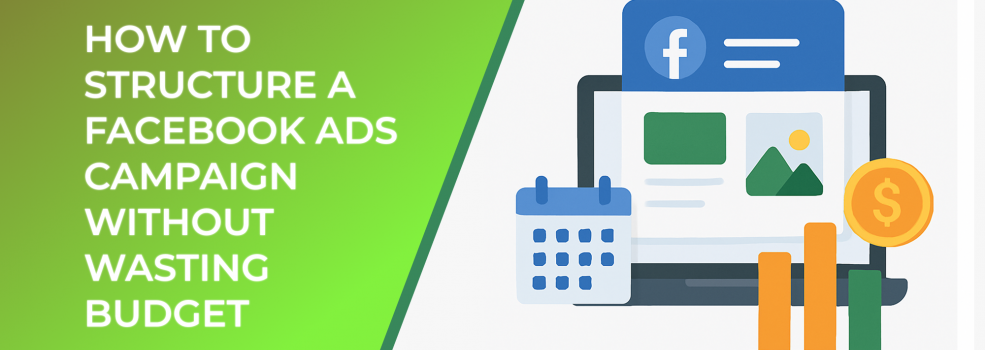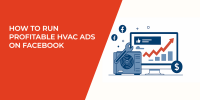Running Facebook ads can be one of the fastest ways to generate leads and sales—but only if your campaign is structured properly. A poorly built campaign burns through budget without delivering consistent results. That’s why advertisers need a clear framework for Facebook ad optimization, from audience selection to creative testing. In this article, we’ll break down how to structure your campaign so that every dollar works harder.
Why Campaign Structure Matters
According to Wordstream, the average Facebook ad click-through rate (CTR) across all industries is around 0.9%, while the average conversion rate is just 9.21%. These numbers highlight two key realities: most ads fail to engage, and even fewer convert. Without a smart structure, you risk targeting the wrong people, overbidding, or wasting ad spend on creatives that don’t perform.
Visual breakdown of a structured Facebook Ads hierarchy—campaigns align with objectives, ad sets manage audiences and budgets, and ads deliver creative
A solid campaign setup helps you:
-
Control budget allocation more effectively
-
Test different targeting strategies without overlap
-
Scale winning ads while cutting underperformers
Step 1: Define a Single Clear Objective
Before launching, choose one campaign objective in Ads Manager that aligns with your business goal. Whether it’s conversions, lead generation, or traffic, don’t dilute your budget by mixing goals. For example, if you want leads, pick Lead Generation and avoid simultaneously optimizing for reach or engagement.
Step 2: Segment Audiences Intelligently
Audience segmentation is where most advertisers waste money. Instead of lumping everyone into one broad group, split your audiences strategically:
-
Cold audiences: Use interest targeting, lookalike audiences, or behavioral data to reach people who don’t yet know your brand.
-
Warm audiences: Retarget website visitors, video viewers, or engaged followers.
-
Hot audiences: Retarget past customers or people who reached checkout but didn’t purchase.
By structuring audiences this way, you can tailor messaging and bids to each stage of the funnel. This is at the core of effective Facebook ad targeting.
Step 3: Use Ad Sets to Control Variables
Instead of testing multiple elements in one ad set, isolate variables. For example:
-
Ad Set A → Same audience, different creatives
-
Ad Set B → Same creative, different audiences
This way, you’ll know what’s actually driving performance. Keep budgets at the ad set level initially, then switch to Campaign Budget Optimization (CBO) once you’ve identified winners.
Step 4: Optimize Creatives for Performance
Creative fatigue is one of the biggest budget drains. A study by AdEspresso found that ad performance can drop by up to 50% after just 5 days due to audience fatigue. To avoid this, rotate creatives frequently and test multiple formats:
-
Carousel ads for showcasing multiple products
-
Video ads for storytelling and engagement
-
Collection ads for immersive mobile shopping
Always run at least 2–3 variations per ad set for proper Facebook ad optimization.
Step 5: Monitor Metrics That Matter
Industry benchmarks: average Facebook ad costs and performance metrics such as CPC, CTR, and conversion rates
Instead of obsessing over vanity metrics like likes or impressions, focus on:
-
Cost per click (CPC)
-
Click-through rate (CTR)
-
Conversion rate (CVR)
-
Return on ad spend (ROAS)
By tracking these metrics consistently, you’ll quickly see which ads deserve more budget and which need to be paused.
Step 6: Scale Smartly
Once you identify high-performing ads, scale them gradually. A common mistake is doubling budgets overnight, which resets the learning phase. Instead, increase budgets by 20–30% every few days. For advanced scaling, duplicate winning ad sets into new campaigns with broader audiences.
Suggested Reading from LeadEnforce
To deepen your strategy, check out these related articles:
-
Why You See 'Ad Set May Get Zero' on Facebook and How to Fix It
-
Swipe-Through vs Scroll-Down: Choosing the Right Ad Flow for Mobile
By structuring your Facebook ads campaign with clear objectives, segmented audiences, and ongoing optimization, you can maximize efficiency and avoid wasted budget. Remember: success comes not from spending more, but from spending smarter.

